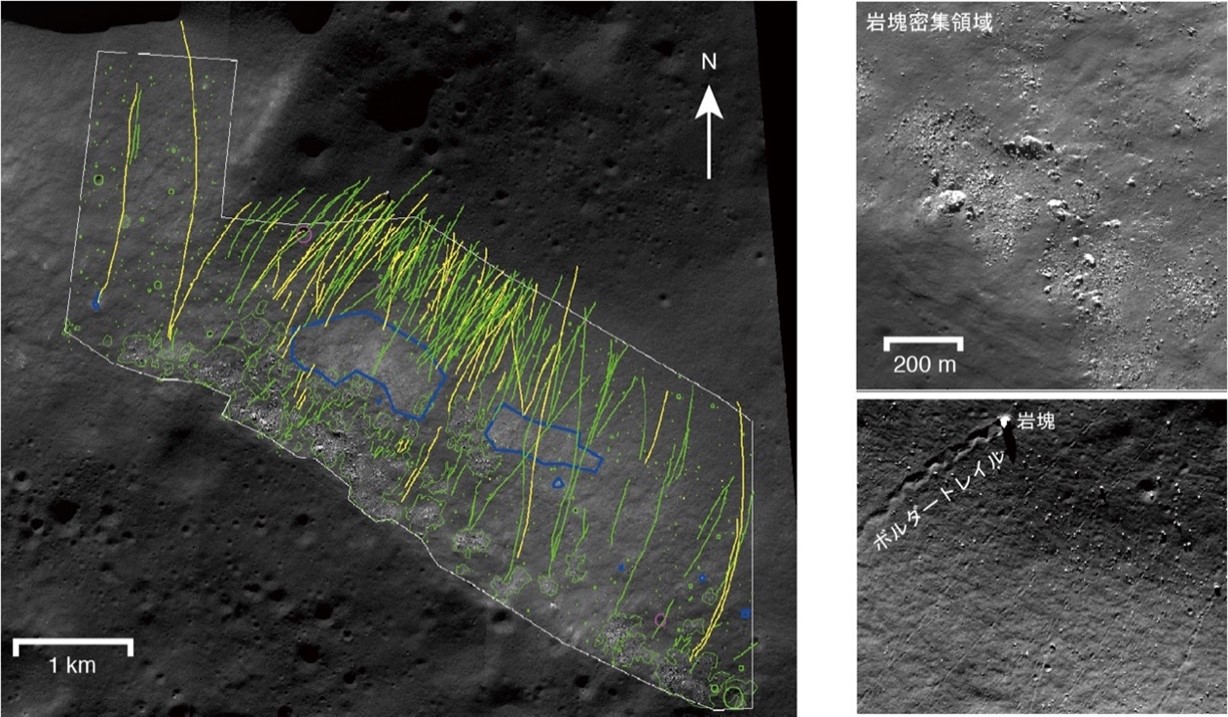DATE2022.10.25 #Press Releases
Elucidating how the topography of lunar crater slopes is still actively changing
Disclaimer: machine translated by DeepL which may contain errors.
Nagoya University
Graduate School of Science, The University of Tokyo
Summary of Presentation
Ayame Ikeda, Doctoral student, and Professor Hiroyuki Kumagai, Graduate School of Environmental Studies, Nagoya University, Tokai National University Corporation, in collaboration with Associate Professor Tomokatsu Morota, Graduate School of Science, The University of Tokyo, have studied the causes of rock mass failure, small craters, obliquity, distribution of fresh regions, and the magnitude of seismic motions during small crater formation on the Moon from data obtained by the NASA LRO lunar explorer. We estimated the magnitude of seismic motions during the formation of small craters, and investigated the causes of rock collapse based on data from NASA's LRO spacecraft.
Previous studies have concluded that shallow-onset lunar tremors that occur at faults cause rock mass failure, and the effect of tremors during the formation of small craters on the slope has not been quantitatively evaluated until now.
In this study, we found a correlation between the acceleration at the time of small crater formation and the point where the rock mass began to collapse, and pointed out the possibility that a large local acceleration around the small crater caused the rock mass to collapse. In addition, comparing the location of the crater where the mass failure occurred with the epicenter distance of the lunar epicenter estimated by the Apollo mission, no correlation was obtained between the two, indicating that it is difficult for a mass failure to be caused by a lunar epicenter alone. Based on these results, we conclude that the cause of the mass failure is strongly suggested to be localized tremor during the formation of small craters, rather than a lunar epicenter on an impulsive fault. Based on these results, we proposed a model in which rock masses are formed above the crater slope and repeatedly collapse due to tremors at the time of celestial impact, causing the slope to relax.
The results of this research were published in the October 4, 2022 issue of the Journal of Geophysical Research: Planets, the journal of the American Geophysical Union.
Figure: LRO high-resolution image of the southern slope of the Schrodinger Basin. (left) Dense rock mass areas are indicated by green polygons, collapsed rock masses are indicated by yellow and green lines, and small craters larger than 5 m in diameter are indicated by yellow, green, and magenta circles. The northeast direction is downslope. (Right) Close-up view of the dense rock mass area and rock collapse at the top of the slope. Image credit: NASA/LROC/GSFC/ASU
For more information, please visit the Nagoya University website.



